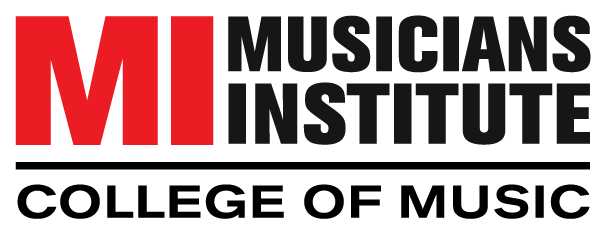For this faculty blog, Musicians Institute drum instructor Stewart Jean begins a series looking into the essential drum grooves. We begin with : Shuffles.
In my opinion a drummer’s musicality can really be assessed by how well they play a shuffle. The Shuffle may sound easy but it is deceptively tricky and often misunderstood. What comes to mind when you hear the word “shuffle”? Texas Swing, Chicago Style, New Orleans Style, perhaps you really don’t have much shuffle knowledge to even answer. In this blog we will look at four different styles of shuffles that will not only expand your knowledge but also make you a better drummer.
Written by: Drum faculty Stewart Jean
The Double Shuffle
The Double Shuffle gets its name from the fact that both hands are playing the same rhythm, the Shuffle. The Shuffle is based on the 8th note triplet and simply eliminates the second partition of the 8th triplet. This creates a mesmerizing pulse that lays the groundwork for a groovy tune.
Check out Jim Keltner on the tune Tore Down (composed by Freddie King) Eric Clapton 1994 release, From the Cradle:

Blog Post
"*" indicates required fields
By submitting this form, I authorize Musicians Institute (MI) to make or allow the placement of calls, emails, and texts to me at the phone number that I have provided, including through the use of automated technology, or a prerecorded or artificial voice. I understand that I am not required to provide my phone number as a condition of purchasing any property, goods, or services. I agree to the terms of MI’s Privacy Policy. MI will not sell or rent your information to third parties, and you may unsubscribe at any time.
For more information check out this tutorial:
Drum Lesson: The Two-Handed Double Shuffle
The Jump Swing Shuffle
The Jump Swing Shuffle is a great groove to use on more up-tempo situations. Unlike the Double Shuffle, the Jump Swing utilizes the jazz “spang-a-lang ride pattern and a more broken left hand snare pattern. Opening up the pattern allows for a more relaxed feel that floats more than the Double Shuffle. Texas-based drummer Doyle Bramhall lays down a swinging Jump on Uh Uh Baby by Marica Ball from the 1985 release Hot Tamale Baby:
For more information check out this tutorial:
Drum Lesson: Jump Swing (Shuffle)
The Backwards Shuffle
Backwards Shuffle? Yes. This is an older style shuffle that works great for more retro blues tunes and boogies. The Backwards Shuffle is sometimes referred to as the “Flat Tire” shuffle as it has a natural lope by putting the accents on the upbeats. It is essentially a Double Shuffle flipped upside down. An easy one to add to the shuffle tool box once mastered. Check out this slightly straight/slightly swung groove Sonny Freeman plays on the classic Memphis Slim tune Every Day I Have the Blues from the must have album by BB King, Live at the Regal (1964):
For more information check out the following lesson:
Funk Shuffle
As stated above, the shuffle is based on the 8th-note triplet but the Funk Shuffle is derived from the 16th note triplet or sung 16th note template. This is a great groove to play when playing hip hop or more modern country and rock styles. Most commonly this groove is played with alternating sticking on the hi-hat depending on the tempo. The trick is to find the magic space between the notes. You don’t want it too tight nor too straight. A good example of this feel is from the song Ain’t it Fun by Paramore from their 2013 self-titled album. Drummer Ilan Rubin masterfully lays down an amazing funk shuffle:
For more information check out the following lesson:
Drum Lesson: The Funk Shuffle (16th-note Shuffle)
The family of shuffle grooves is seemingly endless, filled with varieties and slight modifications. I hope these four examples peak your interest in the world of shuffles.
Musicians Institute is the leader in contemporary music education offering certificates to Masters degrees in programs spanning instrument performance, electronic production, music business, and everything in between.
For more information on all programs offered, please visit here: mi.edu/programs/
For more information on MI Online programs, please visit here: mi.edu/programs/mi-online/

